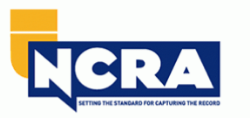Trial Presentation Your Ally for Powerful Evidence Demonstration in Court
Astound the Court: Essential Components of a Powerful Test Presentation
Necessary elements such as comprehending the target market, crafting a compelling story, and mastering verbal and non-verbal interaction are critical components of a reliable presentation. As these variables intertwine, they create a natural approach that not only informs yet additionally engages jurors on several levels.

Comprehending Your Audience
Recognizing your audience is a crucial element of effective trial discussion. A successful discussion rests on the capability to grasp the demographics, worths, and proneness of jurors. This comprehension notifies how arguments are framed, evidence is offered, and emotional charms are crafted, making sure that the message reverberates with the jurors on a personal level.
Study shows that jurors come from diverse backgrounds and might have differing degrees of comprehending relating to lawful process. In addition, recognizing the jurors' possible biases and life experiences permits the test presenter to expect arguments and address issues proactively.
Efficient test discussion additionally involves observing jurors' reactions during the procedures. Being in harmony with non-verbal hints can supply understanding into their interaction and receptivity, enabling real-time changes in strategy. Ultimately, a profound understanding of the target market not just enhances interaction yet also builds connection, raising the likelihood of a positive outcome. Involving with jurors as people instead than a cumulative system is vital in cultivating a strong link in the court room.

Crafting an Engaging Story
Crafting a compelling narrative is important in directing jurors through the complexities of an instance. A well-structured narrative not only simplifies intricate lawful principles but also engages jurors on a psychological degree, making the details extra relatable and remarkable.
This message should resonate with the jurors' worths and experiences, fostering a connection that goes beyond plain truths. This sequential approach can help jurors adhere to the development of events, highlighting cause and impact.
Incorporating human components-- such as individual stories or narratives-- can better enhance the narrative's effect. These components stimulate compassion, allowing jurors to picture the effects of the case on genuine lives. Furthermore, using a consistent theme throughout the presentation strengthens the primary debate, making it easier for jurors to keep crucial points.
Ultimately, a compelling narrative changes a test discussion from a mere recitation of realities right into a convincing story that captivates the court, motivating them to deliberate with both factor and feeling.
Using Visual Help
Integrating aesthetic aids into a test discussion can dramatically boost jurors' understanding and retention of info. Visual products such as graphes, representations, photos, and videos can change intricate legal concepts website here and proof right into quickly digestible layouts. By involving several senses, these help permit jurors to picture the situation's essential elements, making it easier for them to follow along and realize complex information.
In addition, well-designed visual help can emphasize crucial factors and emphasize partnerships between different items of evidence. Timelines can successfully illustrate the series of occasions, while annotated pictures can make clear specific information relevant to the situation. This not just aids in understanding yet also enhances the narrative provided by the lawyer.
Extremely complex or chaotic visuals may bewilder jurors and take away from the message. Eventually, effective visual communication can be a powerful tool in persuading jurors and assisting them reach notified conclusions.
Mastering Verbal Communication
Efficient spoken communication navigate to this website is important in a test presentation, as it serves as the primary means through which attorneys share their debates and attach with jurors. Simpleness in language promotes understanding and assists jurors comprehend complicated issues presented during the trial.
Furthermore, tone and pacing considerably impact how messages are received. A confident tone conveys authority, while ideal pacing allows jurors to soak up info without feeling bewildered. Attorneys should additionally vary their vocal inflections to stress essential points and keep jurors' rate of interest throughout the presentation.
Furthermore, the organization of spoken disagreements is important. Structuring the narrative realistically and coherently aids jurors comply with the attorney's line of thinking, making Resources it simpler for them to preserve important information. Making use of convincing strategies, such as storytelling, can also improve the emotional vibration of the arguments offered, thus creating a much more profound link with jurors.
Eventually, understanding verbal interaction not only enhances an attorney's situation but likewise fosters count on and rapport with the court, considerably boosting the possibilities of a beneficial judgment.

Engaging With Body Language
Nonverbal interaction plays an essential function in trial discussions, commonly communicating messages that words alone can not reveal. Body language, incorporating motions, position, faces, and eye call, substantially influences how jurors perceive the reliability and genuineness of the presenter. A confident stance, with shoulders back and an open stance, can infuse depend on, while closed-off body movement may recommend defensiveness or uncertainty.

Faces need to reflect the feelings related to the instance, strengthening the story existing. As an example, a genuine expression throughout a touching minute can elicit compassion and strengthen the sob story. Ultimately, understanding body language is important for effective trial presentations, as it boosts verbal communication and develops an engaging presence that resonates with the jury.
Verdict
Finally, mesmerizing the court demands a calculated strategy that encompasses comprehending the target market, crafting an engaging narrative, using aesthetic help, understanding verbal communication, and involving via body language. Each aspect plays a critical role in producing an effective test discussion that resonates with jurors on both emotional and intellectual levels (trial presentation). By incorporating these parts efficiently, attorneys can considerably improve their capacity to persuade and influence jury decision-making